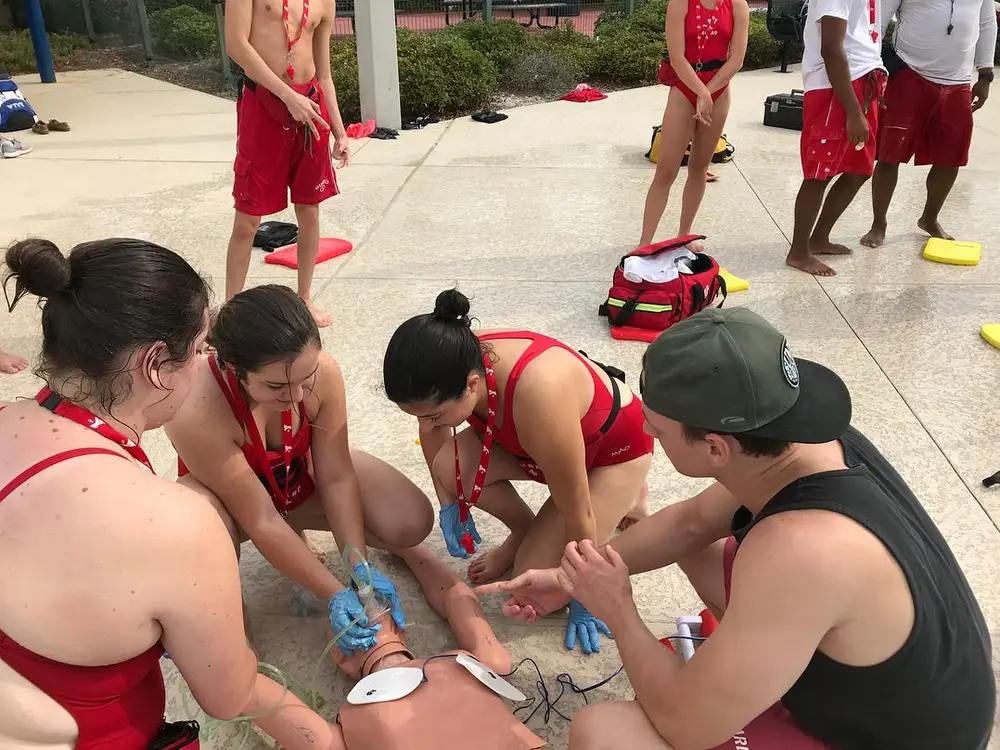Becoming a lifeguard is more than just a summer job or a way to spend time by the pool—it’s a commitment to ensuring the safety and well-being of others. Whether you’re interested in working at a beach, pool, or water park, the journey begins with enrolling in a lifeguard class. These classes provide the essential training and certification needed to handle emergencies, save lives, and maintain a safe environment around water. In this article, we’ll explore the critical aspects of lifeguard classes, what they entail, and why the American Lifeguard Association (ALA) offers the best training available.
The Importance of Lifeguard Classes
Lifeguarding is a serious responsibility that requires more than just swimming skills. Lifeguards must be vigilant, quick-thinking, and well-trained in various rescue techniques, first aid, and CPR. Lifeguard classes are designed to equip candidates with the knowledge and skills necessary to perform their duties effectively.
These classes cover a range of topics, including:
- Water Rescue Techniques: Learning how to safely approach, rescue, and transport drowning victims is a core component of lifeguard training. This includes surface dives, underwater rescues, and spinal injury management.
- CPR and First Aid: Lifeguards must be proficient in cardiopulmonary resuscitation (CPR) and first aid. These life-saving skills are critical in emergencies, especially when a victim’s survival depends on immediate intervention.
- Surveillance and Prevention: Lifeguard classes teach the importance of proactive surveillance to prevent accidents before they occur. Lifeguards must be able to identify potential hazards, enforce safety rules, and maintain a vigilant watch over swimmers.
- Emergency Action Plans: Understanding and implementing emergency action plans (EAPs) is crucial for handling crises efficiently. Lifeguards are trained to coordinate with other team members and emergency services to manage incidents effectively.
- Physical Fitness and Stamina: Lifeguarding demands physical fitness. Lifeguard classes often include fitness tests to ensure that candidates are capable of performing the strenuous tasks required in a rescue situation.
Choosing the Right Lifeguard Class
Selecting the right lifeguard class is essential to ensure that you receive comprehensive training. While several organizations offer lifeguard training, not all are created equal. Factors to consider when choosing a lifeguard class include the curriculum, certification, instructors, and the reputation of the training organization.
One of the leading providers of lifeguard training in the United States is the American Lifeguard Association (ALA). The ALA is renowned for its rigorous training programs that produce highly skilled and confident lifeguards. Here’s why the ALA stands out as the best option for lifeguard classes:
The American Lifeguard Association: Setting the Standard
The American Lifeguard Association has been a pioneer in lifeguard training for decades, setting the gold standard for safety and excellence. The ALA’s lifeguard classes are widely recognized for their thoroughness, high standards, and emphasis on real-world scenarios. Here’s what makes the ALA the best choice for aspiring lifeguards:
- Comprehensive Curriculum: The ALA’s lifeguard classes cover everything from basic water safety to advanced rescue techniques. The curriculum is constantly updated to reflect the latest best practices and safety standards.
- Experienced Instructors: ALA instructors are seasoned professionals with extensive experience in lifeguarding and water safety. Their expertise ensures that students receive high-quality training and mentorship throughout the course.
- Hands-On Training: The ALA emphasizes practical, hands-on training that prepares candidates for real-life situations. Simulated rescue scenarios, CPR practice, and first aid drills are integral parts of the training program.
- Flexible Learning Options: The ALA offers various training formats, including traditional classroom instruction, blended learning (a combination of online and in-person training), and full online courses. This flexibility allows candidates to choose the learning method that best fits their schedule and learning style.
- National Recognition: Lifeguard certification from the ALA is recognized nationwide, making it easier for certified lifeguards to find employment across the United States. The certification is also accepted by many employers, ensuring that ALA-trained lifeguards are in high demand.
- Emphasis on Lifelong Learning: The ALA encourages continuous learning and professional development. Lifeguards can return for recertification courses to stay current with their skills and knowledge, ensuring they remain effective in their roles.
What to Expect in an ALA Lifeguard Class
Enrolling in an ALA lifeguard class is a commitment to becoming the best lifeguard you can be. Here’s what you can expect from the training process:
- Initial Assessment: Before starting the course, candidates must pass a swimming assessment that tests their endurance and ability to perform basic water rescues. This ensures that all participants have the necessary swimming skills to succeed in the program.
- Classroom Instruction: The course begins with classroom sessions covering topics like water safety, CPR, first aid, and the principles of lifeguarding. Candidates will learn about the legal and ethical responsibilities of a lifeguard, as well as the importance of communication and teamwork.
- In-Water Training: The bulk of the training takes place in the water. Candidates will practice rescue techniques, spinal injury management, and other critical skills under the guidance of experienced instructors. This hands-on training is essential for building the confidence and competence needed to handle real emergencies.
- Written and Practical Exams: To earn certification, candidates must pass both written and practical exams. The written exam tests knowledge of lifeguarding principles, while the practical exam assesses the ability to perform rescues, CPR, and first aid.
- Certification: Upon successful completion of the course and exams, candidates receive their lifeguard certification. This certification is valid for a set period, after which recertification is required to maintain active status.
Why Choose the ALA for Lifeguard Training?
Choosing the American Lifeguard Association for your lifeguard training ensures that you receive the highest quality education and preparation for your role as a lifeguard. The ALA’s commitment to excellence, comprehensive curriculum, and experienced instructors make it the top choice for those serious about lifeguarding.
Moreover, the ALA’s emphasis on real-world skills and scenarios means that you’re not just learning theory—you’re gaining practical experience that will serve you well in your lifeguarding career. Whether you’re looking to work at a community pool, a beach, or a water park, the ALA provides the training you need to excel.
Conclusion
Becoming a lifeguard is a rewarding and impactful career choice. It requires dedication, physical fitness, and, most importantly, proper training. Lifeguard classes provide the essential skills and knowledge needed to protect and save lives in aquatic environments. By choosing a lifeguard class from the American Lifeguard Association, you’re investing in the best training available, setting yourself up for success as a professional lifeguard.



